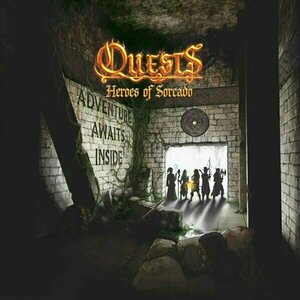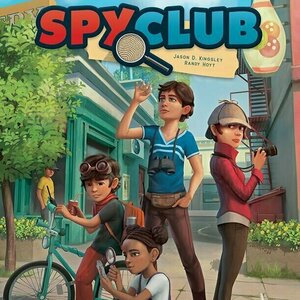Purple Phoenix Games (2266 KP) rated Peak Oil Profiteer in Tabletop Games
Jun 11, 2021
Disclaimer: For this preview, we played the Tabletopia version of the game. The pictures you will see below are screenshots from my plays online. Also, I do not intend to rehash the entire rulebook, but rather provide a general overview of the rules and gameplay. For a more in-depth look, check it out when it hits Kickstarter! -L
Peak Oil Profiteer is an economic game of area majority/movement, network building, and simultaneous action selection in which players take on the roles of oil corporations competing to make the most money in an oil-rich country before corruption overtakes the land. There is a power struggle between 3 Factions, so play your cards right (literally) to come out ahead. To setup for a game, set the board in the middle of the table, populate the 3 Faction Tracks with their corresponding cubes, place the Corruption cube on 93%, create the Contingency deck (as described in the rules), shuffle the Blackmail deck, and give each player their 5 Action cards, starting Money, and 3 Pawns in their color. Flip all 9 Leader tokens face-down, shuffle them, and randomly give one to each player, placing the remaining Leader tokens face-up near the board.
The game is played over a series of rounds. At the start of every round, one card from the Contingency deck will be revealed/resolved. Contingency cards will either be Events (that will most likely alter the rules for the current round), or Consultants (to be ‘hired’ by an individual player for special abilities). Once the Contingency card has been dealt with, the round moves to the next phase: Action Selection. All players have the same 5 Action cards, numbered 1-5, available to them every round. Players will select one of their 5 Action cards and place it face-down in front of them. Then, in numerical order, all Action cards will be resolved. When your Action number has been called, you will reveal your Action card, perform the corresponding action, and take the card back into your hand. Once all players have performed their Action for the round, check the Corruption track – if it has reached 100% then the game ends, and if not then the game moves to a new round.
The 5 Actions available to all player are: 1. Networking, 2. Sell Weapons, 3. Buy Drilling Rights, 4. Sell Oil, and 5. Contingency. Networking allows you to collect Blackmail in order to win control of Faction Leaders. You may only Sell Weapons to a Faction if you control at least one of its Leaders. You will earn a set amount of Money, and a new Troop cube will be added to the game board. To Buy Drilling Rights from a Faction, you again need to control at least one of its Leaders. Pay for the rights, and then add one of your Pawns to that region of the board. Once you’ve got Drilling Rights, you can Sell Oil. Remove your Pawn from the corresponding region, and collect the appropriate amount of Money. And lastly, Contingency allows you to either ‘hire’ a Consultant, or perform an extra action as a result of an Event.
The amount of Money that you pay/earn for each of the actions is dictated by the Faction Tracks. For example, the price of Weapons decreases as Factions get more Troops on the board, which means you won’t earn as much selling to a Faction with lots of Troops in play. You have to time your Actions wisely in order to maximize your profit! If, at the end of a round, the Corruption track has reached 100%, the game ends. Players count up their Money, and the player with the highest earnings is declared the winner.
Although the theme isn’t something that would normally appeal to me, I have to say that Peak Oil
Profiteer is a solid game. The gameplay is straightforward, the player interaction is competitive but not combative, and the strategy keeps you engaged all game. The ultimate goal is to earn the most Money, and the Faction Track creates sort of a “commodity speculation” type mechanic to the gameplay. The costs vary depending on the Faction Track, and it can be manipulated by all players. That in and of itself creates some fun player interaction because the Faction Track affects all players. Doing something to block an opponent now may come back to bite you next round. Another neat element about Peak Oil Profiteer is that players select their Actions simultaneously, and they are then resolved in numerical order. Depending on where your turn falls in the round, you might be able to do just what you had planned, unless an opponent went before you and changed the game layout. There is an amount of uncertainty that forces players to adjust their strategy on the fly and adapt to the current situation.
I will say that resolving Actions in numerical order does kind of add an element of Action Programming, if you will. Once you have selected your Action this round, you are locked in. No matter what happens before your turn, you must perform your selected Action if at all possible. It creates some neat strategic opportunities, but at the same time, can feel like you’ve been blocked out. Just something to consider! Normally, I would touch on components, but as this was a Tabletopia version of the game, I can’t really do so. I will say that the art style and card/board layouts online are thematic and immersive. If the physical version of the game looks anything like this digital version, it’ll be a good looking game! One component that I especially appreciated was that each player gets a Player Reference/Round Reference card. It gives you the information you need without being too wordy, and it stops you from having to refer back to the rule book every turn. So big thanks from me for that!
Having never played the original Peak Oil game, I have to say that Peak Oil Profiteer made a good impression on me. It’s fast to teach and learn, engaging, and strategic enough to keep you thinking. The fluctuation of the Faction Track, and the order of Action resolution add elements of uncertainty and ‘luck’ (if you will) that keep the game from having a clear run-away winner. Everyone is in it until the very end, and the race for the most Money is a nail-biter for sure. If you’re looking for something interactive but not too confrontational, while also putting your strategic chops to the test, consider backing Peak Oil Profiteer on Kickstarter!
Purple Phoenix Games (2266 KP) rated Quests: Heroes of Sorcado in Tabletop Games
May 26, 2021
Disclaimer: For this preview, we were provided with a Tabletop Simulator file for the demo/prequel adventure. These are not the final components, since it is a digital file, but the artwork and rulebook are mostly finalized – so the gameplay is what you will get in the physical copies of the game. -L
Quests: Heroes of Sorcado is a cooperative, campaign-driven game in which 1-6 players will take on the roles of party members with the goal of completing all 8 of the included adventures. The game does come with a tutorial/prequel adventure to help introduce players to the mechanics and overall gameplay before diving in to the full game. To setup for this Adventure Zero, place the game board within reach of all players, set aside the Campaign and Adventure books, place the Boss card for this adventure face-down above the board, and sort and place Potion/Loot/Armor/Health tokens in their corresponding areas. Set the 6 required Adventurers for the prequel in a circle near the game board, and take the listed Health and Starting Equipment for each Adventurer. The prequel uses only a single Location, so set that Deck in one of the Location spaces of the board, and the game is now ready to begin!
Depending on the player count, everyone will take on the role of at least one of the Adventurers, and the game itself is wholly cooperative. Here is how Adventure Zero works. Each Adventurer, in clockwise order, will be dealt 1 face-down Location card. Then, starting from the first dealt Location card, the Adventurers will take turns revealing their card. Some cards are Events or Story Moments, and prompt players to read from the Adventure/Campaign books. These cards often describe a scenario and require the player to select one of several provided choices, either earning a reward or penalizing the group. Most cards are Monster cards and will begin a combat! Each of the Adventurers has varying values for the four Stats of the game: Strength, Intelligence, Dexterity, and Wisdom. Combat in the game involves rolling a d20 and adding the appropriate Stat modifiers to the roll. You can also use Potions and Equipment to buff your rolls as well. How do you determine success or failure? Every Monster has a weakness to a specific Stat, so you will use that Stat modifier to enhance your rolls. Equal or exceed the Monster’s weakness, and it is defeated! Depending on the difficulty/level of the Monster, you will either fight with 2-6 Adventurers – adding their modifiers and abilities to your roll as well. How you setup your Adventurers is important, as adjacency is what helps determine who can be in each combat. If you defeat a Monster, collect the reward (Loot tokens, Potions, or Treasure cards), and the game continues to the next player. If you lose the fight, the Monster moves to the next Adventurer and combat begins anew. Once every Location card has been revealed and resolved, the Adventurers will reveal the Boss card and the final combat begins! Even though each combat has one primary Adventurer/player at the helm, the game is cooperative, so make sure you’ve got that teamwork mentality!
I have to say that I was pleasantly surprised by Quests: Heroes of Sorcado. The gameplay may seem a bit involved at first, but it actually flows pretty seamlessly and effortlessly. As someone who has played a handful of other campaign-driven board games before, I have to say that this one was by far the easiest for me to learn and play. Resolve Location cards, beat Monsters, and (hopefully) defeat the final Boss. Pretty straight-forward, and I really appreciate that. One thing that helps make it so user-friendly is that the game is based on only 4 Stats, instead of every conceivable Stat used in other role-playing games. That helps keep the game uncomplicated, while still offering players options every turn. Another thing that I really like? The Campaign/Adventure books are pre-written stories, prompts, and scenarios that allow the game to be truly cooperative. No need for an all-knowing Game Master here, as everything is already laid out for you. I also really like these pre-written aspects because it helps deliver the role-playing feel without pressuring the players to create their own campaign. Yes, there are still some ‘choose your adventure’ elements to it, but it doesn’t give so many options to overwhelm players.
That being said, I do have to mention that this is a campaign-driven game, so you will know the main storyline after your first complete playthrough. Although you would know the Monsters/Events/Boss/etc. of each adventure, the shuffle and draw of the decks would allow for variability, and thus replayability. You know the all the twists in the story, but will be able to play with different hero combinations as well! All 8 adventures will take quite some time to complete though, so don’t let the fact that you’ll know the main storyline after one playthrough turn you off from the game completely! Normally, I like to talk about the components of a game. Since this was a Tabletop Simulator version of the game, I am unable to really do so. I will commend the artwork and style of the game though – it is very thematic, engaging, colorful, and fun to look at. The text and abilities are clear, I love the color-coded modifiers, and the cards are all pretty intuitive. I have no doubts that the physical copies of the game will be quality productions as well.
As I stated above, this preview only covers the demo/prequel adventure, and its real purpose is to introduce players to the gameplay. That being said, I know that the full adventures will offer players additional elements (Side Quests, trading Loot and Potions, ‘level up’ the Adventurers, etc.) that will just add to the experience. Yes, there is the ‘one and done’ aspect of a campaign-driven game, but there is so much content in the full game to keep you going for quite a long time. If you’re looking at getting into this genre of game, but are worried about complexity, I would highly recommend Quests: Heroes of Sorcado. The gameplay overall is simple and straight-forward, while still offering the epic campaign feel. This one hits Kickstarter today, so head on over and check it out for yourself!
Purple Phoenix Games (2266 KP) rated Spy Club in Tabletop Games
Aug 12, 2021
Spy Club is a cooperative memory and deduction card game utilizing an action point system and sharing of resources. It is set in any neighborhood where kids can gather in groups and snuff out a mystery. The goal is to whittle the clues down to the correct Motive, Suspect, Location, Crime, and Object of the Crime. Are you intrepid youths up to the task?
To setup, place the main board on the table, and the Escape Marker upon it at the bottom of the track. Shuffle the Movement Deck cards separately by backs, remove one from each differently-backed set, and place them in day – sunset – night order in its space. Each player receives a play board according to the number of players and a spyglass in their favorite color to go upon their play board. The Idea markers can be in a rough pile near everything else. The Clue Deck is to be shuffled and placed face-down (or face-up, whichever you prefer; they are double-sided) and each player is dealt a number of Clues equal to the number of spaces on their play boards. Clues will also be dealt to an “Incoming Clues” area (an offer row or “market”). DO NOT LOOK AT THE BACKS OF THE CARDS. Like, EVER. Unless you use an action to do so. The Suspecteeple will be placed on the right-most Clue Card of the starting player’s board. The game of sleuthing may now begin!
A player’s turn will consist of three main steps with different phases in those steps. Step 1 is Use Actions. Players will be able to use three Actions on their turn. These Actions are: Investigate, Shift Focus, Confirm, and Scout. To Investigate the active player will flip a Clue Card from their collection to its back. They may then continue flipping their cards or stop at any time. To Shift Focus a player will simply move their spyglass to a different Clue and collect Ideas equal to the number of Clues whose aspects match the newly-focused one (two Ideas if moving to a Location and a player has two Location Clues). Skipping Confirm, to Scout simply means purchasing a card from the Incoming Clues area to a player’s board, with a discard of an existing card already there.
Confirming is where the main action in Spy Club lies. Players will be attempting to Confirm five Clues of matching aspect (Location, Motive, etc) in order to hone in on the correct aspect. To Confirm, a player can submit a Clue from their collection (hand) to the main board. The cost, in Ideas, depends on where the spyglass lies. If the spyglass is directly under the Clue to be submitted the cost is nothing. However, if a player wishes to complete three Confirm actions and they have matching Clues on either side of their spyglass, they would need to spend two Ideas for each Clue resting one space away from the spyglass.
There are also rules for taking “Teamwork Bonus Actions,” but I will let you discover those on your own.
After these Actions are carried out, Step 2 is Refill. Firstly the active player’s hand will need to be refilled from the Incoming Clues row, and more Incoming Clues come out to fill that row.
Step 3 is Move the Suspect. Drawing from the Movement Deck the active player will match up the Movement cards from the previous round and the current round to find out how many spaces the Suspecteeple will be moving through players’ cards. Depending upon which aspect Clue the Suspecteeple lands a negative action will be levied against the players. In some ways the Suspect could land on cards that trigger no negative action, but I will leave that for you to discover as well. I am a bit… distracted.
Play continues in this fashion of players Using Actions, Refilling the Clue cards, and Moving the Suspect until players win by solving all five aspects of the crime, the Suspect escapes, the players run out of Idea markers, the Suspect escapes due to running out of Movement cards, or there are insufficient Incoming Clues to refill a player’s hand. So there are four ways to lose and one way to win.
Components. I find the components in Spy Club to be good overall. Nothing really stands out as amazing, either in design or quality. The art is very good, though. One thing I will say about the components as a whole is that once the game is setup and in play it looks fascinating on the table. I love the way it looks and certainly assists with full immersion. Always a plus in my book.
There are so many things I love about this game. And there are so many things I didn’t even explain here! Ok I’ll tell you one. Spy Club can be played as a one-shot game night medium-length (60 minutes) game, or can be converted into a campaign game where players will play five connected scenarios using a giant stack of cards that are not in use for the one-shots. That is simply fabulous! I can play one game of this to get people hooked, then reel them in by offering to continue this as a campaign to see what the main story arc is really trying to tell us. Oh man, that’s just special and I love it!
I feel like I have been playing a lot of really great games lately, and Spy Club is certainly a GREAT game. In fact, I told the rest of the team that this one is a contender for my Top 10 Games of All Time list. It has everything I love in a game: it is difficult (my first game I would have lost had it lasted one more turn) without being too heavy, it is inviting me to play more games (especially with the campaign mode active), I just like looking at it on the table, and creates a stunning amount of tension as we race against the game clock to figure out the crime aspects.
I have had this in my collection for too long without it being played, and I am so sorry that it took me so long to get into it. I will certainly be playing this a LOT more, and introducing as many people to it as I can. I think in the gaming world it is flying under the radar, but I will be one of its champions and suggest it as much as possible. If you like certain aspects (hehe) of Clue, 13 Dead End Drive, Carmen Sandiego, and even Jaipur, then take a look at Spy Club. Purple Phoenix Games gives this a super-sleuth 11 / 12. I actually might go play it right now. Yes, at 11:07pm.
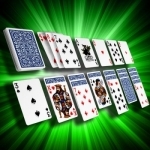
Solitaire City (Ad-Free)
Games and Entertainment
App
Play all your favorite solitaire games such as Klondike, Double Klondike, Spider, FreeCell,...
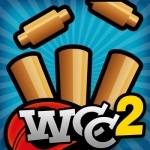
World Cricket Championship 2
Games and Sports
App
Welcome to the Next Generation in Mobile Cricket Gaming! Every cricket lover can now have the most...
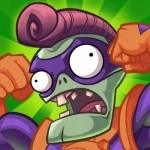
Plants vs. Zombies™ Heroes
Games and Entertainment
App
From the makers of Plants vs. Zombies 2 and Plants vs. Zombies Garden Warfare 2 comes the next epic...
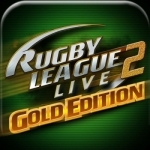
Rugby League Live 2: Gold Edition
Games and Sports
App
AN INTENSE RUGBY LEAGUE EXPERIENCE!!! The ultimate iPhone & iPad rugby league experience! Tru...
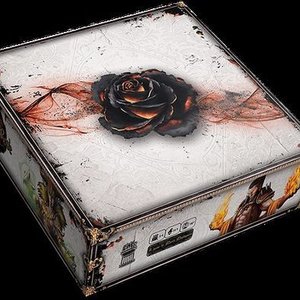
Black Rose Wars
Tabletop Game
Black Rose Wars is a fantasy board game for 2 up to 4 players. Each player becomes a Great...
BoardGames 2018Games
Rikki Hammond (33 KP) rated Room 25 in Tabletop Games
Jun 19, 2019
The game is played out over 25 room tiles, which are laid out face down apart from the starting room in the middle, and the basic goal is to make it to the elusive Room 25, somewhere out on the grid, but you have to do it quick, as there is a set number of turns to find it in.
Players will simultaneously choose to do 1 or 2 actions on their turn, and can choose to move into a room, thus revealing it's effect to everyone, push another player into a room, peek at a room, or slide a whole row of rooms in the direction of their choosing (nit including the starting room.)
Rooms are split into 3 colours: Green are safe, and can sometimes help you, yellow are normally traps or hinderances, and red rooms can kill you in one way or another (there's even a room that is instant death if you move into it.) Players have to navigate the rooms using their actions, and hope they don't meet their demise.
There are also varying game modes and difficulties to choose from. Competitive pits everyone against each other, co-operative means everyone is trying to work together, and team mode has two groups trying to outwit the other team. You can also adjust the difficulty by adding or removing more yellow and red rooms (the manual has set layouts for the tiles, but you can also customise as you see fit.)
Room 25 has a lot of replayability, but does suffer from a bit of luck. If there is bad decisions made, you can be eliminated very early on. The characters in the base game, although looking cool, have no differences to them either (which is resolved in the expansion.)
These are minor gripes though, and doesn't stop Room 25 being a fast paced, hectic, but enjoyable game.

